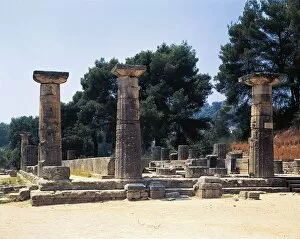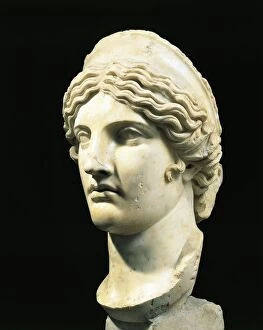Hera Collection (page 11)
Hera, the majestic queen of the Greek gods in Olympus, holds a significant place in Greek mythology
All Professionally Made to Order for Quick Shipping
Hera, the majestic queen of the Greek gods in Olympus, holds a significant place in Greek mythology. Published in 1880, her tales continue to captivate readers and inspire awe. As the wife of Zeus (also known as Jupiter), Hera's presence is felt throughout various mythological narratives. One such story involves Juno and Apollo joining forces with Hera, Aphrodite, and Athena for a contest of beauty before Paris. The outcome of this competition would have far-reaching consequences for mortals and immortals alike. Aphrodite herself has been called "Hera Borghese, " depicted beautifully by Monte Calvo in the 2nd century. Meanwhile, a cast copy of the Juno Ludovisi showcases another representation of this powerful goddess. In an exquisite charcoal with pastel on buff paper artwork titled "Juno, " we witness her regal grace personified on canvas. This portrayal captures both her strength and elegance simultaneously. The famous painting "The Judgment of Paris" by Peter Paul Rubens depicts Hera alongside other goddesses vying for Paris' favor. This masterpiece from 1912 transports us back to that pivotal moment when their destinies were forever altered. Symbolism often accompanies depictions of Juno; one prevalent motif is that of the peacock representing her divine connection. Known as "Juno and the Peacock, " these representations highlight her association with beauty and royalty. Visiting Greece offers opportunities to explore magnificent structures like the Hera Temple or Basilica dedicated to this revered goddess. Additionally, an Aedicula featuring Jupiter and Juno carved into limestone stands proudly in Austria—a testament to their enduring influence across borders. Lastly, while not directly related to Hera herself but still relevant within Greek mythology is Neptune's Temple—dedicated to Poseidon (Neptune). These interconnected deities remind us how intricate and intertwined ancient beliefs truly are. Hera's legacy endures through art, literature, and the collective imagination.



























